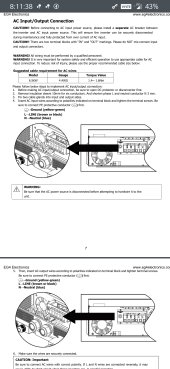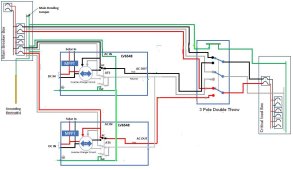Lt.Dan
Solar Wizard
The LV6548s will allow a full 6500w on one leg (inverter), and 0w on the 2nd leg (inverter). The Sol-Ark, from what I have read, cannot do this.Sure, but loading 6600w on one leg, and 3000w on another is an overload here.
Where in a sol-ark I believe it's the IMBALANCE that matters. So on a 15k you can do 8000 on one and 2500 on another and that's ok
I have personally tested this with 2x MPP LV6548s that I have. Im assuming the EG4 is the same.
I know lots of bouncing around lol. My mistake for not using the proper naming.
Edit: i will say I probably wouldn't load my LV6548s at more than 60-70% load continuously, as they get murder hot and require either lots of ventilation, or air conditioning. I opted to air condition the compartment that my 2x LV6548s are in.





